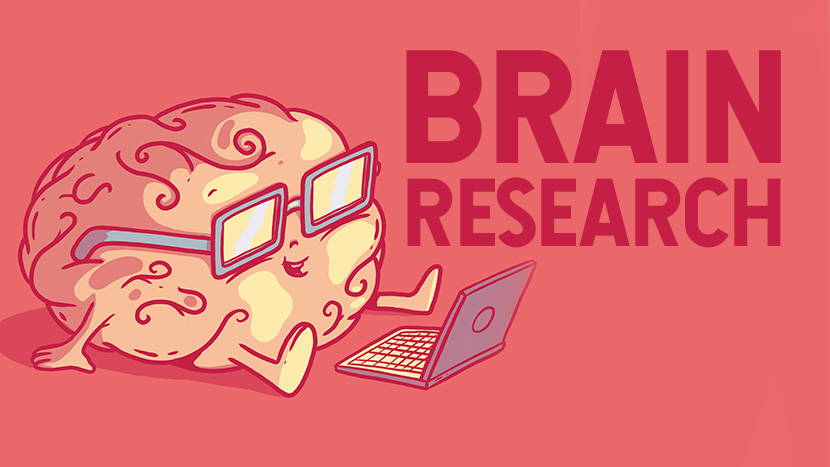Move your sensors? What brain research promises
In February 2013, U.S. President Barack Obama, in introducing a new brain research project, the BRAIN Initiative, to Congress, stated, “It’s time to reach a level of research and development not seen since the peak of the space race.

The researchers from the science dissertation writing service like WritingAPaper believe that 2013 was a landmark year for neuroscience. Instead of the space race came the brain race. That is when the largest scientific programs for brain research were launched in different parts of the world.
The first of these, the decade-long Human Brain Project, was initiated in Europe. Hundreds of laboratories from 26 countries are working on the project.
Research in the European program is largely devoted to the development of various information technologies: the creation of databases for scientists involved in brain research, modeling artificial neural networks, neurorobotics, and the creation of neuromorphic artificial intelligence. The total cost of the project was estimated at one billion euros.
A few months after the European program, the U.S. government announced the creation of the U.S. program, the BRAIN Initiative. In this case, the word BRAIN is an acronym for Brain Research through Advancing Innovative Neurotechnologies.
The U.S. program includes the development of next-generation brain research methods that will advance brain research at the cellular level. “The program’s priority is to develop and use methods to gain fundamental knowledge about the functioning of the nervous system,” the program’s authors said. American neuroscientists decided to study how dynamic patterns of neural activity become thinking, emotion, perception, and decision-making in healthy and diseased brains.
A year later, Japan and Israel joined the competition, followed by Australia, South Korea, and Canada.
In 2017, China joined the brain race. This country had been developing a major program for several years.
The Chinese joined the brain research competition later, and compared to the U.S., neuroscience (especially basic science) was initially less developed there. However, China is now actively catching up with the US.
The Chinese have decided to cover topics that are dealt with in both Europe and the United States. On the one hand, they intend to focus on studying the neural basis of cognitive functions, i.e., to do basic research on the brain. And on the other hand, they are working on early diagnosis and treatment of brain diseases. In addition, they are engaged in developing technologies inspired by the work of the brain – the creation of neurocomputer interfaces and artificial intelligence systems based on neuromorphic principles.

Main areas of research
So, from the programs of the brain research in different countries, we see that they are interested in three important topics in general:
- Studying how the brain works, understanding the processes of cognition, coding, storage, and processing of information.
- Creation of neuromorphic (brain-like) artificial intelligence systems, based on the studied principles of brain functioning. Here it is important to understand that, for the first time, neuroscience is changing its orientations. If previously its development was pushed by medical needs and by the necessity of treating neurological and mental diseases, now scientists who are engaged in the creation of a new generation of artificial intelligence systems are waiting for new knowledge from it.
- Development of neural interfaces.
Why has the brain race just started now?
Scientists have been actively studying the brain before. However, in the late 1980s and early 1990s, neuroscience was revolutionized. New research methods began to appear, new knowledge was gained in genetics, biology, and nanosciences. All these opportunities accumulated cumulatively and led to a sharp breakthrough in 2013.
Technologically advanced countries started to say that brain research should become the key task of science and that the most important state S&T programs should be related to this topic.
The revolution in methods has raised the level of research to fundamentally new heights.
Previously, researchers mostly dealt with whole structures and areas of the brain, and the main methods of studying it were the electroencephalogram (EEG) and functional magnetic resonance imaging (fMRI). These methods made it possible to record the electrical activity of conglomerates of cells numbering millions (EEG) or hundreds of thousands (fMRI) of neurons.
Placing electrodes directly inside the cranium allowed for making more accurate measurements, but did not allow recording the activity of individual nerve cells, since a millimeter of cortex can contain from 50 to 100 thousand neurons.
Now, however, some methods allow research at the cellular level. Scientists are now able to address individual cells rather than entire brain structures.
When studying the brain of animals, neurophotonics methods have been used. They allow penetrating the depths of the brain and studying individual nerve cells with the help of optics.
The understanding that the unit of information storage may not be a group of cells, but an individual neuron, has also revolutionized neuroscience.
Another important factor that moved research forward dramatically was the development of information technology, which makes it possible to analyze huge amounts of data about brain processes.
What have these new knowledge and technologies allowed us to achieve in the neurosciences? Let us tell only about some of the research in this field.

Mind-reading. As fantastic as it may sound, researchers have developed crude but still realistic methods of reading minds. They are called Mind Reading or Brain Reading.
In other words, scientists are already able to identify what kind of mental activity a person is engaged in at a given moment. New methods for recording and analyzing brain activity have made it possible to begin serious developments in the field of mapping – the mapping of concepts and notions that are represented in the adult brain.
Thanks to artificial intelligence systems, i.e. the use of machine learning algorithms, it has become possible to train a computer neural network to recognize images (both static and moving) that a person sees at a given moment from the signals of the brain’s electrical activity. So far, these images are reproduced roughly and inaccurately, but the important thing here is that scientists now have a code that allows them to connect mental processes with processes in the nervous system.
The neural network is trained as follows: subjects are presented with various clips, and brain activity is recorded using functional magnetic resonance imaging. The information obtained from several subjects is accumulated, and the neural network is trained with its help. Using this “experience,” it is then able to recognize video sequences in people who have not participated in the machine learning process.
Decoding the content of dreams. Machine learning, on the other hand, can decode the content of dreams. In the study, scientists recorded the activity of a sleeping person, then woke him up and checked whether the artificial intelligence correctly predicted the images the person saw in his dream. The machine doesn’t recognize the images accurately enough, but it is already able to distinguish between men or women, a group of people, or a single person.
Not only images but also speech can be reconstructed from brain activity. But if the previous methods were based on fixation of brain activity using noninvasive methods, i.e. EEG and fMRI, speech reconstruction was based on signals obtained using a grid of electrodes that were placed directly on the brain. The speech was reconstructed using artificial intelligence systems. By brain activity, scientists learned to artificially reproduce what a person only plans to say mentally, even without laryngeal articulation.
But attempts to understand the nature of experience, consciousness, and memory through such a macrocode are limited. fMRI works with a group of cells of hundreds of thousands of units and records their total activity, whereas to obtain more accurate results one needs to work with individual cells.
Neural Interfaces
According to the professional researchers from the best writing services a neural interface (or brain-computer interface) is a technology that allows the brain to send information to and receive information from an external device. Such an external device could be a computer, an artificial limb, an exoskeleton, a drone, a wheelchair, etc.
Such a device makes it possible, for example, for paralyzed people to move. For example, when the spinal cord is damaged, a person can no longer move his or her legs or arms, but the areas of the brain that control movement remain intact. They are still able to control the body. A person’s mental commands are decoded by recording the electrical activity of their brain. Electrical signals coming from the brain are fed to an external device.
There are also interfaces capable of transmitting signals from the prosthesis to the brain. Most interfaces at the moment are non-invasive because invasive technology – implanting electrodes directly into the brain – has serious drawbacks. Electrodes are rejected by the brain or cause damage. Therefore, researchers are trying to create new devices based on other technologies.
Ethical issues
Above we intentionally did not mention the ethical side of the issue. It was important for us to acquaint our readers with the state of affairs in the field of neuroscience.
However, every new development in the field of neuroscience raises ethical issues. We can see that scientists and humanity have serious opportunities to directly interfere in humanity’s inner world.
Methods of studying brain activity provide opportunities, in essence, to dissect a person, to deprive them of their intimacy, their right to their inner world, their right to secrecy about themselves, and their right to autonomy.
Previously, attempts to control and influence a person came from the outside, they had to pass through the filter of his consciousness, and he could consciously resist them. Now, the researchers say, technology will be able to influence a person’s desires and actions in such a way that they will be sure that they come from themselves and are done according to their will. Of course, ways of influencing a person by bypassing their consciousness have long been known: hypnosis, NLP techniques, and some other methods. But they have never been a mass phenomenon and have a lot of limitations because the tool used here is the personality of the one who is trying to influence the person.
Will society be able to deal with the dangers and possible abuses? To deal with the received technologies and prevent their abuse, society must have certain qualities and characteristics – at least be guided by strong ethical and moral principles.
To what extent is our society today such a character? How firm in their ethical and moral principles is the new social class of digitizers who will have access to knowledge and achievements of neuroscience in the first place?
































































































